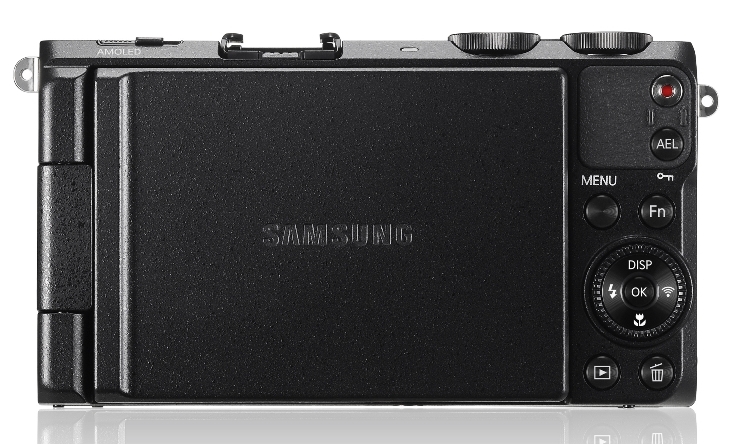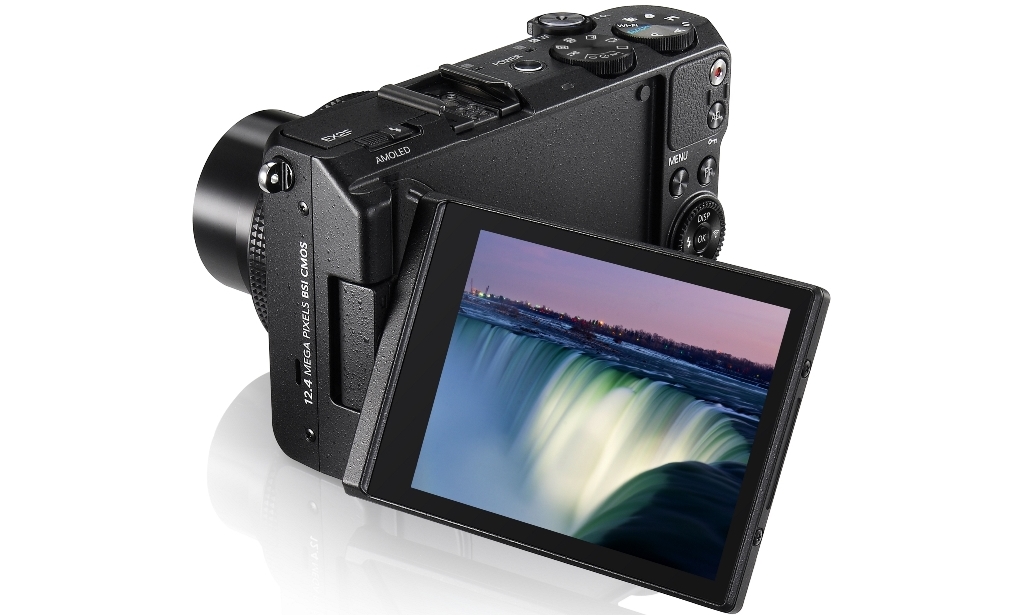Next is the Mode Dial – your primary Dial that either lets you take full manual control, or use a mode like Smart to automatically let the EX2F decide how to properly expose an image. The EX2F keeps a traditional PASM selection. With added fun features like Magic Plus which lets you add effects to images without third party software. A dedicated Movie mode includes a bunch of extra preset features, including the ability to take high speed videos up to 480fps at an extremely low resolution of 192 x 144.
The back of the camera has a very compact, minimalist design with everything needed, such as the menu system. Once you get the hang of the Drive Mode Dial up top, the rest of the settings are easy to navigate. You don’t need many dedicated buttons to fiddle with.
The beautiful Vari-angle AMOLED screen has a 3-inch 640 X 480 614k display; we wish every single camera on the market used a Samsung display. The colours look so bright and vivid, but the negative about this AMOLED screen is that photos tend to look better on the camera, hence ending up a little disappointing when importing them onto your computer (which isn’t really a negative at all). The screen when not in use fits almost flush with the body. Showing how thin the display is while maintaining its ability to rotate in many angles. Another plus is the screens brightness; since the EX2F does not have an optical viewfinder relying on a screen that can work in bright sunlight and dim darker scenes. This screen excels in all lighting conditions.
Returning to the button layout on the back of the EX2F, the camera comes with a dedicated Movie recording button, followed by the AEL button – Auto Exposure Lock, locking the exposure, perfect for panoramic photos or recording video, while keeping the exposure locked as lighting conditions change. Below is the menu button for navigating through the EX2F’s intuitive menu system. Next is the FN function button, another dedicated button that pops up a settings menu. Here you can choose between shutter speeds, aperture, exposure compensation, ISO and various other settings. The scroll wheel also works like a directional pad, which is very smooth and selecting options becomes second nature. Below that are the playback and delete buttons.
 Technology X Tomorrow's Technology Today!
Technology X Tomorrow's Technology Today!


